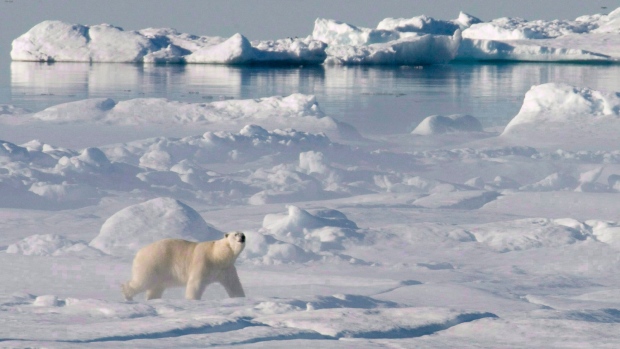Bears pay price of Arctic ice melt

Churchill, Manitoba is about to lose its star performers, but paradoxically nobody will be sorry to see them go. And, even more paradoxically, the whole world can now watch them, courtesy of a set of web cameras set up by the media organisation Explore Live cam footage courtesy of explore.org, Polar Bears International and Frontiers North Adventures.
The story is a simple one: somewhere between 900 and 1,000 polar bears make up the Western Hudson Bay population of Ursus maritimus, the Arctic’s top terrestrial predator, and many of them will have not eaten properly for eight months. Polar bears will if there is no choice forage for goose eggs, berries, carrion and town rubbish, which is why so many gather near Churchill, Manitoba while waiting for the seas to freeze.
The polar bear is adapted to the Arctic ice as perfectly as the African lion is at home on the savannah. But as the Arctic summers lengthen, and the ice dwindles, the southernmost polar bear population is under threat.
Only as Hudson Bay ices over will the Churchill bears be able to hunt their favoured prey, the ringed seal, Phoca hispida, an energy source so rich that – when the hunting is good – polar bears will eat only the blubber, and leave the rest for other Arctic carnivores and scavengers.
The polar bear needs at least two kilograms of seal blubber a day; a hungry polar bear has enough room in its stomach for up to a fifth of its bodyweight. A kilo of seal blubber could deliver up to 5,000 kilocalories which means a 500 kg bear could in theory gorge on up to 500,000 kilocalories a day, in a voracious bid to build up enough fat to see it through the next cycle of spring births and summer fasting.
But to gorge, the bears must get to the ice. During the summer of 2012, Arctic ice contracted to its lowest ever recorded level. If the pattern of summer ice loss continues, the bears could be in trouble.
Fewer cubs survive
Pregnant female bears generally enter their dens in November or December and then emerge with their cubs in April or May, having eaten nothing for four or five months, only to be forced off the ice in July. “So by the time they head out to the ice again, they’ve been without food for up to eight months,” says Barbara Nielsen of Polar Bears International, which declared Polar Bear Week, beginning on 4 November.
“The longer ice free periods are really hard on mothers with cubs and scientists are seeing a drop in cub survival rates as a result.” Some of the population have been fitted with radio collars and tracked by satellite: the first tracked bear came ashore on 4 July of this year, a month earlier than was normal 30 years ago.
Polar bears are powerful swimmers, and have been tracked swimming for huge distances; on land they can move at speed, but not for long, because they overheat. So their best hope of a full meal is on the ice, used by ringed seals as a nursery every spring.
Although summer ice loss in 2013 was much less dramatic than in 2012, Arctic ice has been retreating at an accelerating rate for the last 30 years. Conservationists and zoologists have repeatedly warned that the polar bear population of Hudson Bay is at risk. So the people of Churchill will be happy to see them go, because the sooner they go, the more likely it is that many of them will be back.
You can return to the main Market News page, or press the Back button on your browser.

